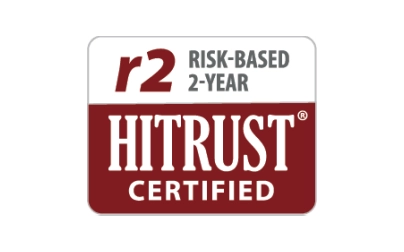As the reach of the novel coronavirus rapidly expanded across the country, the healthcare system has had to adapt and alter how access to care is provided. Many health systems are in trauma mode. Staff at clinics have been moved to COVID-19 care units. Some primary care practices are experiencing severe strains on resources and finances.
One result of the crisis has been that people with asthma, diabetes, high blood pressure and other chronic conditions have experienced an unexpected, sudden shift in how they receive care and guidance. Access to appointments or quick responses from care providers and specialists for low-acuity check-ins are no longer available in many cases.
Quite a few of these individuals are also putting off care for fear of coming into contact with the coronavirus. A recent COVID-19 study by Evidation found that among the respondents with chronic illnesses, 21% were worried about access to ongoing medical care and 53% were concerned about going to the doctor’s office or hospital for necessary care.
This situation leaves patients with chronic conditions wondering where to turn for guidance to manage issues such as blood glucose levels and fluctuations in blood pressure, and how to stay compliant on medications and treatment. And as all of us in the industry know all too well, forgoing or delaying care can lead to long-term consequences for patients, outcomes and costs.
Here are some of the insights we’ve heard from our registered nurses (RNs) who take calls on our telehealth nurse triage line:
“There is definite confusion out there. I’ve had multiple callers wanting to know if they can double up on their blood pressure meds when readings are elevated.”
“Some of the most challenging calls are chronic pain patients who have been trying to taper off of controlled substances and now have no access to the resources they were depending on to be successful.”
“I’m hearing from patients who were referred to a specialist and that doctor isn’t seeing patients right now, and their symptoms are worse … small problems become larger problems.”
“I find that with the diseases such as hypertension, coronary artery disease and diabetes, patients are suffering the most with the inability to maintain their normal routine care. I find quite a few people seeking lab results, having a very hard time getting an answer as to what their results are or an interpretation of them if they do get them.”
Fortunately, many patients have discovered that services provided by telehealth companies are a welcome substitution, especially due to the recent promotion of virtual care and nurse advice lines by the payers and providers that are making healthcare consumers aware of this benefit.
The rise of telehealth to manage chronic conditions
Carenet Health has experienced an uptick—quite dramatic in some categories—in telehealth cases since COVID-19 ramped up.
| Carenet Health telehealth triage cases | Comparison of call instances pre-Covid-19 pandemic (February 2 to March 7, 2020) and during COVID-19 pandemic (March 8 to April 14, 2020) |
|---|---|
| Nasal allergies | +394% |
| Asthma questions/symptoms/attacks (adult and pediatric) | +370% |
| Headache/migraine | +57% |
| Blood pressure control/high blood pressure | +43% |
| Diabetes-related (including adult, pediatric and pregnancy) | +15% |
Telehealth services and nurse triage support are well suited for the new normal where patients are encouraged to stay home. Just like with in-person appointments, telehealth clinical teams use care protocols based on evidence-based best practices to support patients. Callers get the advice they need to manage chronic conditions, as well as directives on appropriate next steps. Patient needs are addressed in a timely manner and at the appropriate level. For instance, a diabetic may be out of insulin and in need of assistance in getting a prescription filled, and our nurses are there to help coordinate.
The path forward—and doing more for patients with chronic conditions
During the pandemic, one focus of nurse advice lines and Virtual Clinics is to help patients stay on course as much as possible with treatment plans. The goal is to prevent the domino effect on the healthcare system caused by patients who put off care during the pandemic, only to see their conditions worsen in the next few weeks or months.
Over the longer term, telehealth and remote patient monitoring services can be integrated into patient engagement strategies to improve chronic disease management and medication adherence plans. In addition to 24/7 access to nurses and virtual visits with physicians, telehealth companies can provide services that proactively contact patients with personalized touchpoints to monitor and manage chronic conditions, including the Medicare population.
Tactics that health plans and providers could consider include:
- One-on-one outreach — Personalized contacts via phone, texts and portal chats
- Remote clinical monitoring and coaching — Technology solutions that track patients’ healthcare data and inform meaningful conversations and advice based on results
- Medication check-ins — Multiple-touchpoint strategies to ensure patients understand directives and are taking medications as prescribed
- Wellness checks-ins — Regular outreach to assess overall physical and mental wellness, access to food and other issues based on patients’ personal health histories
As an industry, it’s important that we work together to ensure that telehealth is leveraged as a proactive gateway for emergency department diversion, closing care gaps and preventing hospital readmissions.
For more information, please reach out to us.


